The Most Playful Lap in F1 History Was Also LEGO's Masterclass in Marketing
Blueprint | Engineering Meets Imagination During the F1 Driver's Parade
Thank you for being here. You are receiving this email because you subscribed to Idée Fixe, the newsletter for curious minds. I’m Toni Cowan-Brown, a tech and F1 commentator. I’ve spent the past five years on the floor of way too many F1, FE, and WEC team garages, learning about the business, politics, and tech of motorsports. I hope you’ll stick around.
⏳ Reading time: 5min
The newsletter already went out this week but I felt like we needed a bonus newsletter to cover the ‘most playful lap in F1 history’ - otherwise known, as when LEGO took over the driver’s parade in Miami and offered us a crash course in emotional marketing.
Also, I guess Formula 1 drivers will happily race electric cars after all.
The Most Playful Lap in F1 History
At this year’s Miami Grand Prix, LEGO didn’t just show up, they took over the grid.
For the first time, all 20 Formula 1 drivers rode the pre-race parade lap in fully drivable, life-sized (almost 1:1) LEGO replicas of their team cars. The fact that some drivers stayed in their LEGO cars longer than required says it all. This wasn’t just another sponsor activation. It was a moment that made the sport feel human - and a little more fun, and honestly, the sport could do with bringing the fun back into it.
Departing from the conventional parade format, the drivers took a full lap (or rather almost a full lap) around the Miami International Autodrome in their LEGO vehicles. The event was filled with lighthearted moments: Max Verstappen humorously noted the LEGO debris on the track, while Lewis Hamilton described it as the most entertaining parade they had experienced, and Kimi Antonelli finished the lap, once his car broke down, on foot to the cheers of fans. The spectacle not only delighted fans but also showcased a more whimsical side of the typically high-stakes sport.
In many ways, LEGO’s Miami Grand Prix stunt felt like a page straight out of Red Bull’s playbook. Much like Red Bull’s habit of parachuting F1 cars onto ski slopes, racing through city centers, or sending them across frozen lakes, LEGO’s parade activation wasn’t just about brand exposure, it was about brand embodiment. Both brands understand that the most powerful marketing doesn’t just tell you what a product is. It shows you what it feels like. For Red Bull, it’s adrenaline. For LEGO, it’s creativity and joy. And both use spectacle as a shortcut to emotion.
This activation was emotional marketing at its most effective. It didn’t push a product but rather, it created a moment. A moment that made fans smile, drivers loosen up, and millions of people online stop scrolling. It tapped into childhood nostalgia, humanized the sport, and proved that even in the hyper-commercialized world of F1, there’s still space for imagination. Like the best Red Bull stunts, it blurred the line between sport, entertainment/spectacle, and storytelling - and reminded us that play is powerful.
The Build: Engineering Meets Imagination
Each car was made from nearly 400,000 LEGO bricks, weighed over 1,000kg, and featured authentic liveries, Pirelli tires, and even moving parts. And capable of speeds up to 20kph with electric power units. Built at LEGO’s Kladno facility in the Czech Republic, the project took 22,000+ hours and 26 designers and engineers to complete.
What could’ve been a forgettable gimmick ended up being a moment of pure marketing genius. It was unexpected. Joyful. Visually irresistible. It dominated social media in the lead-up to the race and resonated far beyond the F1 fanbase. For a brand that trades on imagination, engineering, and childlike wonder, this was the perfect crossover with the high-stakes, high-tech world of Formula 1.
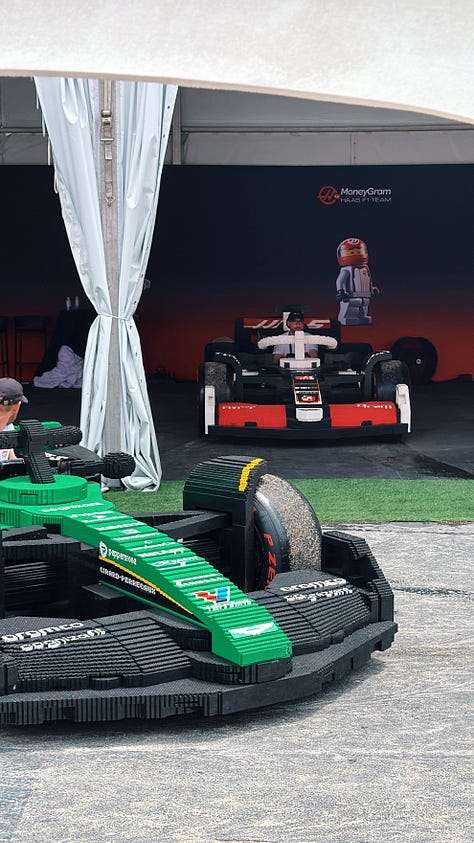
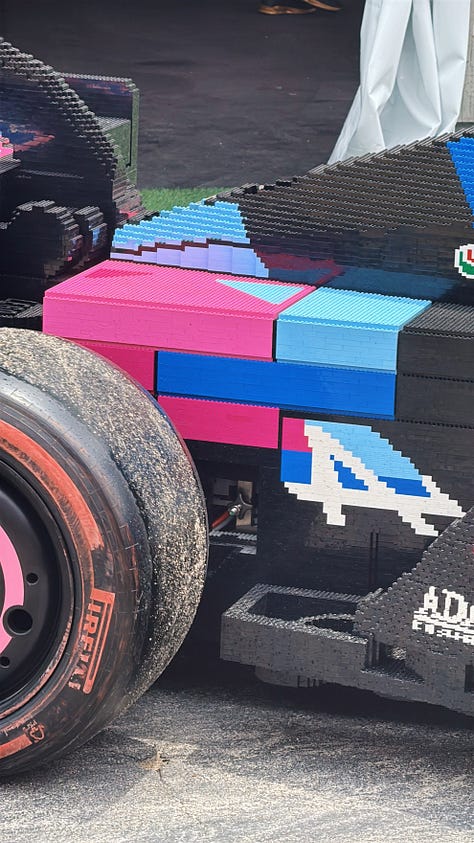
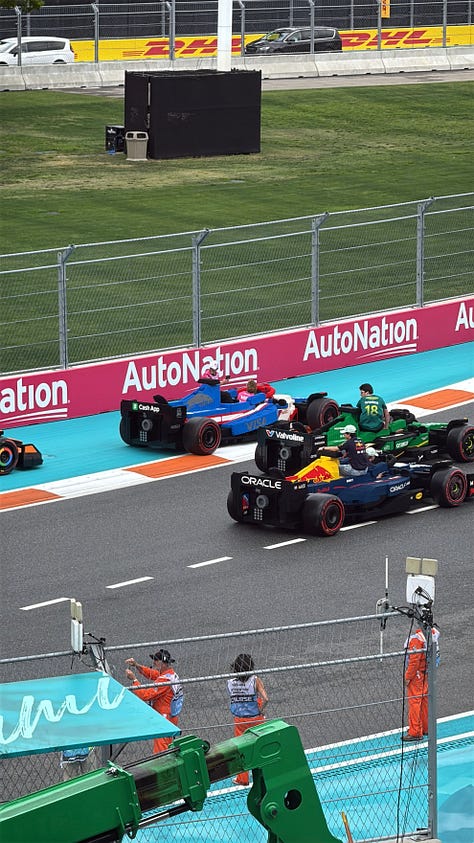
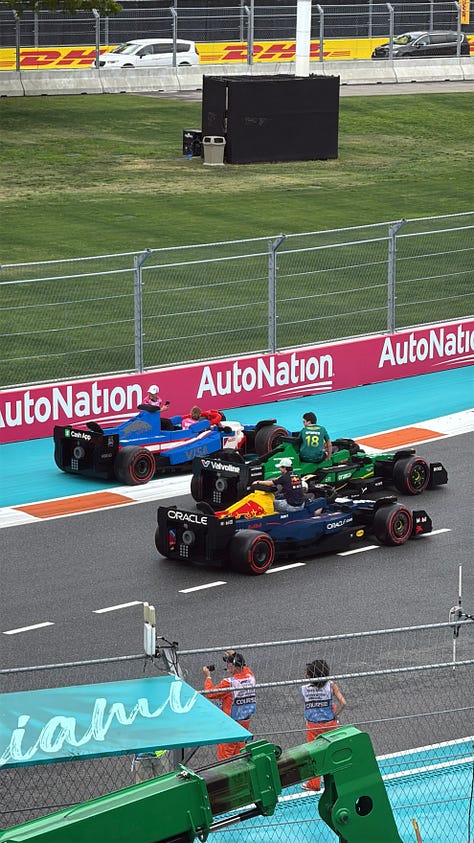
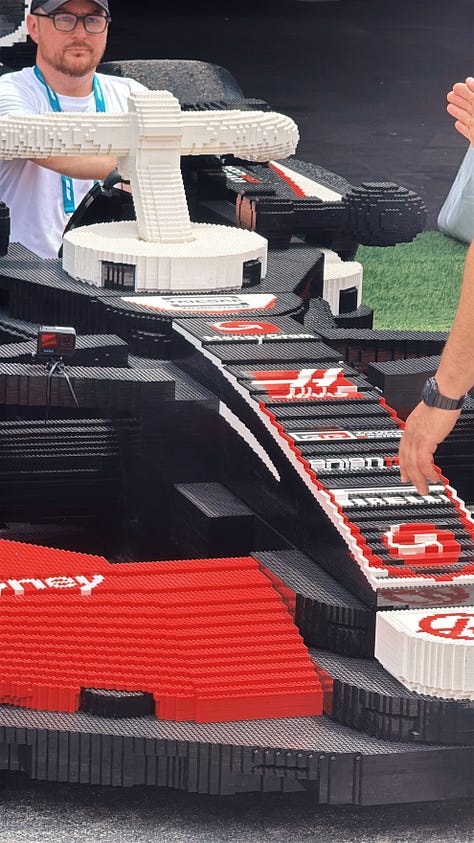
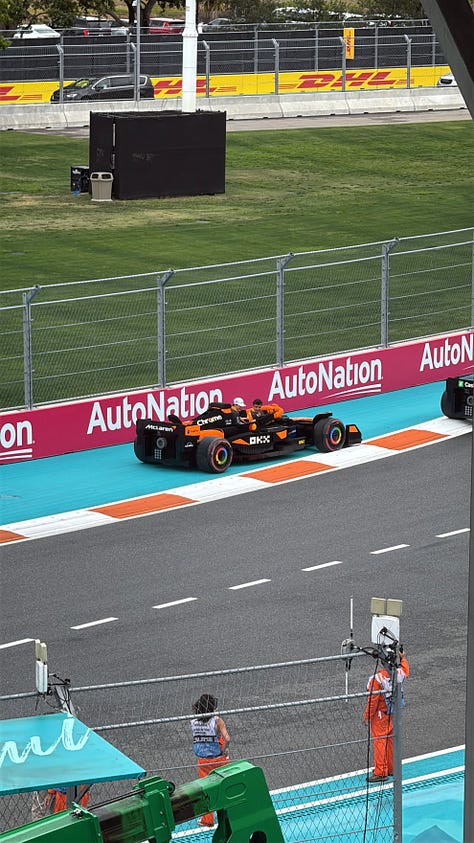
Why It’s A Genius Campaign
This wasn’t just for laughs, it was deeply strategic. The campaign synced with the launch of LEGO’s new F1 sets, featuring all 10 teams in brick form. It also positioned LEGO as a creator of experiences, not just toys, and reframed F1 as a space where creativity and accessibility can live alongside cutting-edge performance.
And in a season where brands are fighting harder than ever to break through the noise - and in Miami, it was noisy - LEGO may have just laid the blueprint, and here’s why:
Immersive Brand Integration: By transforming the drivers' parade into an interactive LEGO experience, the campaign seamlessly merged the worlds of motorsport and play, engaging audiences in a novel way.
Cross-Generational Appeal: The initiative captivated both seasoned F1 enthusiasts and younger fans, particularly with the LEGO Speed Champions sets reflecting the real-life counterparts.
Viral Potential: The unique visuals and joyful interactions among drivers generated significant buzz across social media platforms, amplifying the campaign's reach.
Strategic Alignment: The event coincided with the launch of LEGO's new F1 product lines, including sets for all 10 teams, reinforcing the brand's commitment to the sport.
Note: I was kindly gifted a set of four of these LEGO cars to build by LEGO and invited to their hospitality in Miami to check out the cars up close.
And it definitely worked - on Sunday 4 May (Miami GP race day), the term ‘LEGO’ spiked in Google searches, with related queries such as ‘f1 lego race miami’ (up by +4,950%), ‘lego f1 cars miami’ (up by +4,700%) and ‘lego f1 miami’ (up by +1,450%).
Long-Term Brand Benefits
This campaign exemplifies how experiential marketing can elevate brand perception. This is ‘emotional marketing’ at its best - they created a sense of fun and nostalgia, not just for the drivers on that day but also for the fans watching watching on-site and at home.
For LEGO, it reinforces their image as innovators who bring imagination to life. For Formula 1, it presents the sport as more accessible and family-friendly, potentially attracting a broader audience which they still desperately need - that next generation of Formula 1 fans. The success of this moment sets a precedent for future collaborations and commercial partnerships in this space, and hopefully promising more engaging experiences for fans worldwide.
I’m off to Imola for the Italian F1 Grand Prix (with AWS and Ferrari) on Monday. After that, I’m heading straight to Monaco for my first F1 Grand Prix in Monte Carlo (pinch me) and then off to Web Summit (Vancouver) to speak about the future of fandoms in sports and the business of fans. What do you want to see, learn about and hear more of during these next three weeks?





You nailed it, the whole thing was genius. Fun, playful, creative, aligned….more of this in brand activations please.
I loved this parade so much. The joy was genuine and we saw that all the drivers have the ability to be silly with each other. No bland interview with the same 3 questions at every race.
I can say I’ve never heard so much genuine laughter from the drivers. We saw a new side to them and it was more true to their actual selves.
Race weekends are obviously serious and require focus. Miami was PR perfection.
I imagine the drivers loved getting to blow off steam and embrace the fun.